How to Make Peppermint Tea Properly
on Sep 25, 2022
This post may contain affiliate links. As an Amazon Associate, I earn from qualifying purchases.
Peppermint leaves can be used to make an herbal tea by brewing it in water and it can be made hot or iced. See how easy it is to make this tea perfectly at home with tips from a Tea Sommelier.
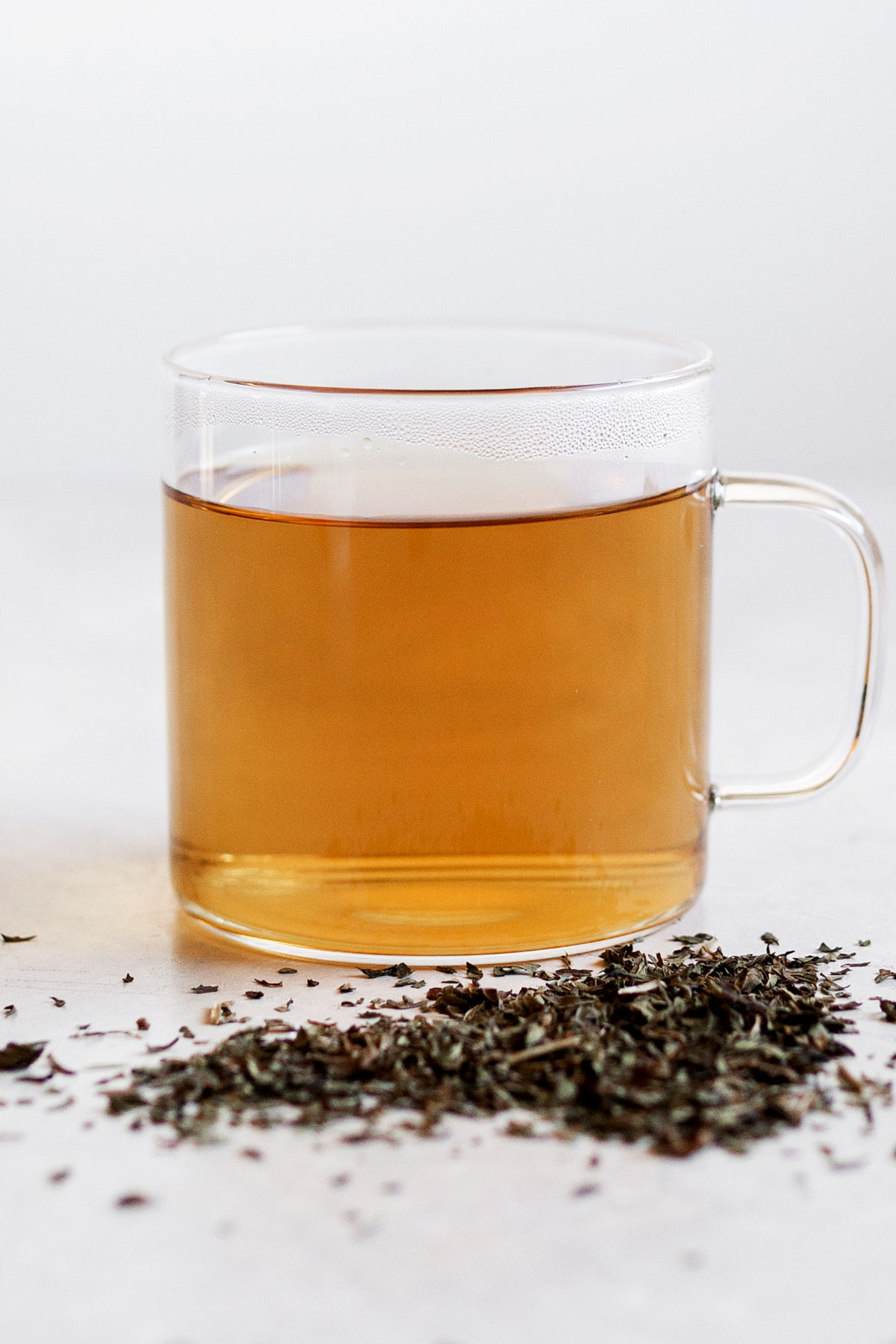
What is Peppermint Tea?
- Peppermint tea is an herbal tea (also called an infusion or tisane) made by steeping peppermint leaves in water. It’s caffeine-free.
- Peppermint is the most popular mint and it’s grown everywhere around the world, but it originated in Europe and Asia.
- Peppermint is a mix of two plants in the mint family: watermint and spearmint.
- Naturally contains a lot of menthol so it’s cooling and energizing.
RELATED: Iced Green Tea with Fresh Mint
6 Health Benefits of Peppermint Tea
1. Relieves Digestive Issues
The next time you have an upset stomach, sip on peppermint tea. Peppermint leaves can soothe gastrointestinal symptoms like nausea, stomach cramps, diarrhea, gas, and indigestion.
Peppermint is also helpful for managing symptoms of irritable bowel syndrome (IBS), a common gastrointestinal disorder. This peppermint tea benefit is due to the menthol in the plant.
Menthol has pain-relieving and antispasmodic properties, meaning it can reduce muscle spasms that cause stomach cramps.
2. Reduces Menstrual Pain
Peppermint tea is an excellent tea for people who menstruate. The menthol in peppermint can relax muscle spasms, ultimately reducing painful menstrual cramps. Also, if you experience gastrointestinal issues before or during your period, the digestive benefits of peppermint tea will lend a hand.
3. Offers Antioxidants
Peppermint leaves are rich in antioxidants called polyphenols. Antioxidants are beneficial compounds that reduce oxidative stress. They work by fighting free radicals, or harmful molecules that can cause cellular damage.
4. Relieves Congestion
Another benefit of drinking peppermint tea involves congestion. The leaves contain a compound called methanol, which has decongestant properties. It works by thinning mucus and reduces swelling in nasal passages.
5. Ease Headaches
Peppermint is a popular natural remedy for headaches. This is due to the relaxing and pain-relieving effects of the plant. The smell is also invigorating and refreshing, which may help a headache.
6. Contains No Caffeine
Peppermint tea is naturally free of caffeine. So, it’s safe for people who are sensitive to caffeine. It’s also one of the best herbal teas for bedtime.
RELATED: 12 Benefits of Drinking Peppermint Tea
Side Effects of Peppermint Tea
1. Possible Allergic Reaction
Peppermint allergies are uncommon, but there are several case reports of allergic reactions to peppermint products. You might be more likely to have a peppermint allergy if you’re allergic to rosemary, basil, oregano, or thyme. These herbs are part of the same family as peppermint.
If you’re new to peppermint and have a history of food allergies, talk to your doctor before drinking peppermint tea.
2. Heartburn
Although the muscle-relaxing effect of peppermint can be helpful, it’s not for everyone. It may cause heartburn in some people. Peppermint can relax the bottom of the esophagus, which is connected to the stomach. This might allow stomach acids to move back up your throat, resulting in heartburn.
If you’re prone to heartburn or have gastroesophageal reflux disease (GERD), avoid drinking peppermint tea.
Ingredient Notes
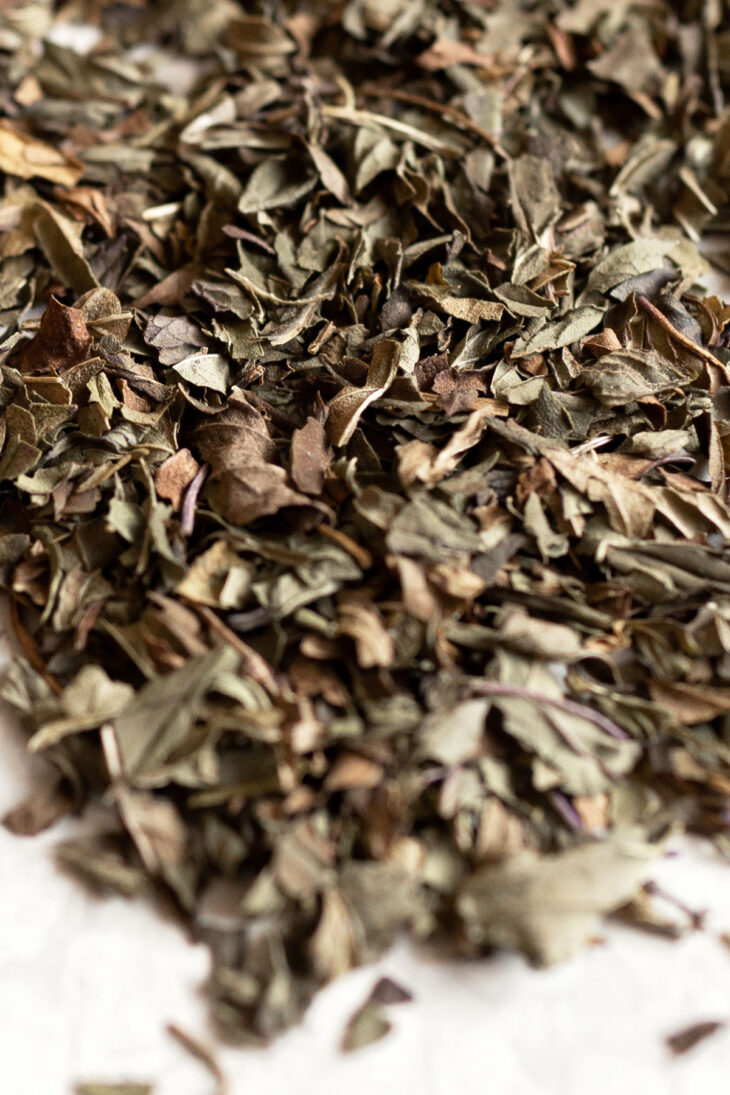
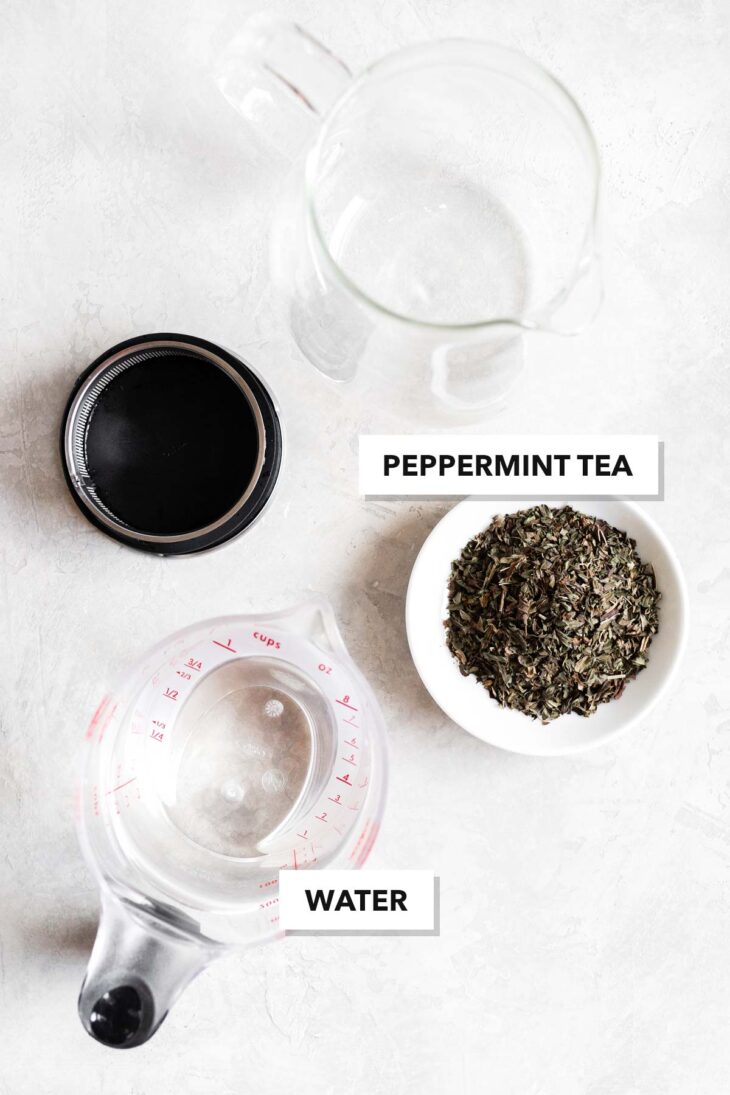
- Peppermint tea: Loose tea and tea sachets contain better quality tea than tea bags.
- Water: Instead of using tap water, go for filtered water. The better the water tastes, the better the tea tastes.
For full ingredients and detailed instructions, please see the recipe card at the bottom of the post.
Photo Credit: Harney.com
Step-by-Step Brewing Instructions
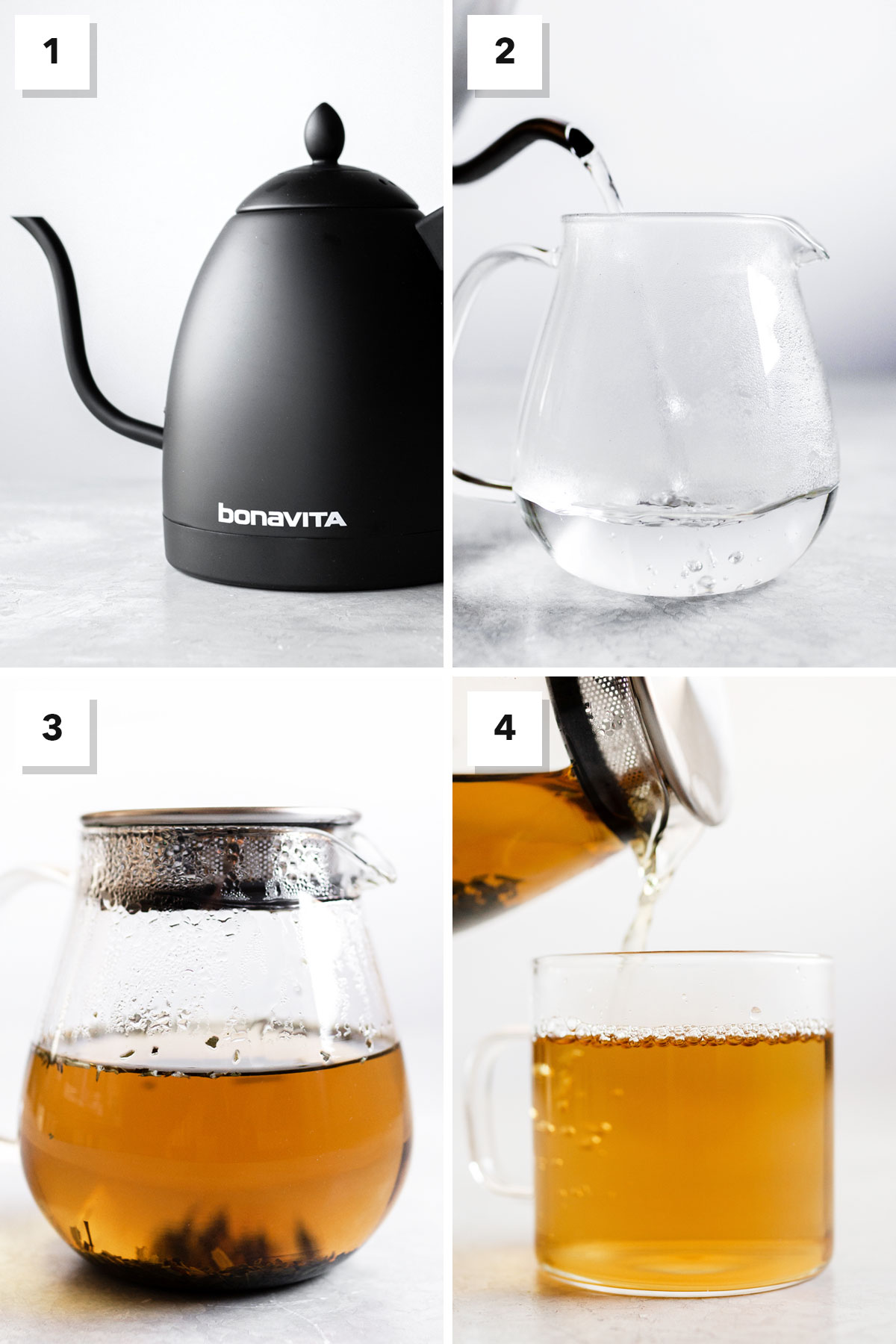
- Boil water.
I like to boil water using an electric kettle with a temperature setting. I set the water to 208°F, which is a bit under a full boil. Boil extra water to warm the teapot. - Warm up teapot.
Pour some of the freshly boiled hot water into a teapot and swirl the water around. Throw out the water. Warming up the teapot keeps the boiled water hot so that there isn’t a big temperature drop when steeping the tea. - Put peppermint tea into the teapot and add hot water. Cover teapot and steep.
- Strain peppermint leaves and pour hot tea into a teacup.
Tea Sommelier’s Tips
Serve peppermint tea with or without sugar or milk.
Both hot and iced peppermint tea can be had without sugar or milk.
Can be steeped for longer without getting bitter.
Peppermint tea is pretty forgiving when it comes to steep time. You can steep it longer than 5 minutes and it’ll still taste great and won’t get overly bitter.
Use loose tea to adjust strength.
Using loose tea means you can easily adjust the amount of tea used, so you can make it stronger or weaker.
Store it properly.
Peppermint tea can be brewed and stored in the refrigerator for up to 4 days. Keep it covered or airtight glass container or pitcher.
Loose peppermint tea and tea sachets should be stored in an airtight container away from light, odors, humidity, and heat.
Questions You May Have
Menthol in peppermint makes the tea taste minty and mildly sweet, leaving a cooling sensation in the mouth. It’s light and refreshing.
There’s no caffeine in peppermint tea as long as it’s only made with peppermint.
No, peppermint isn’t a real tea, it’s an herbal tea. For a tea to be a real or pure tea, it has to come from the camellia sinensis plant, like black or green tea. The peppermint tea comes from the mint plant, not camellia sinensis.
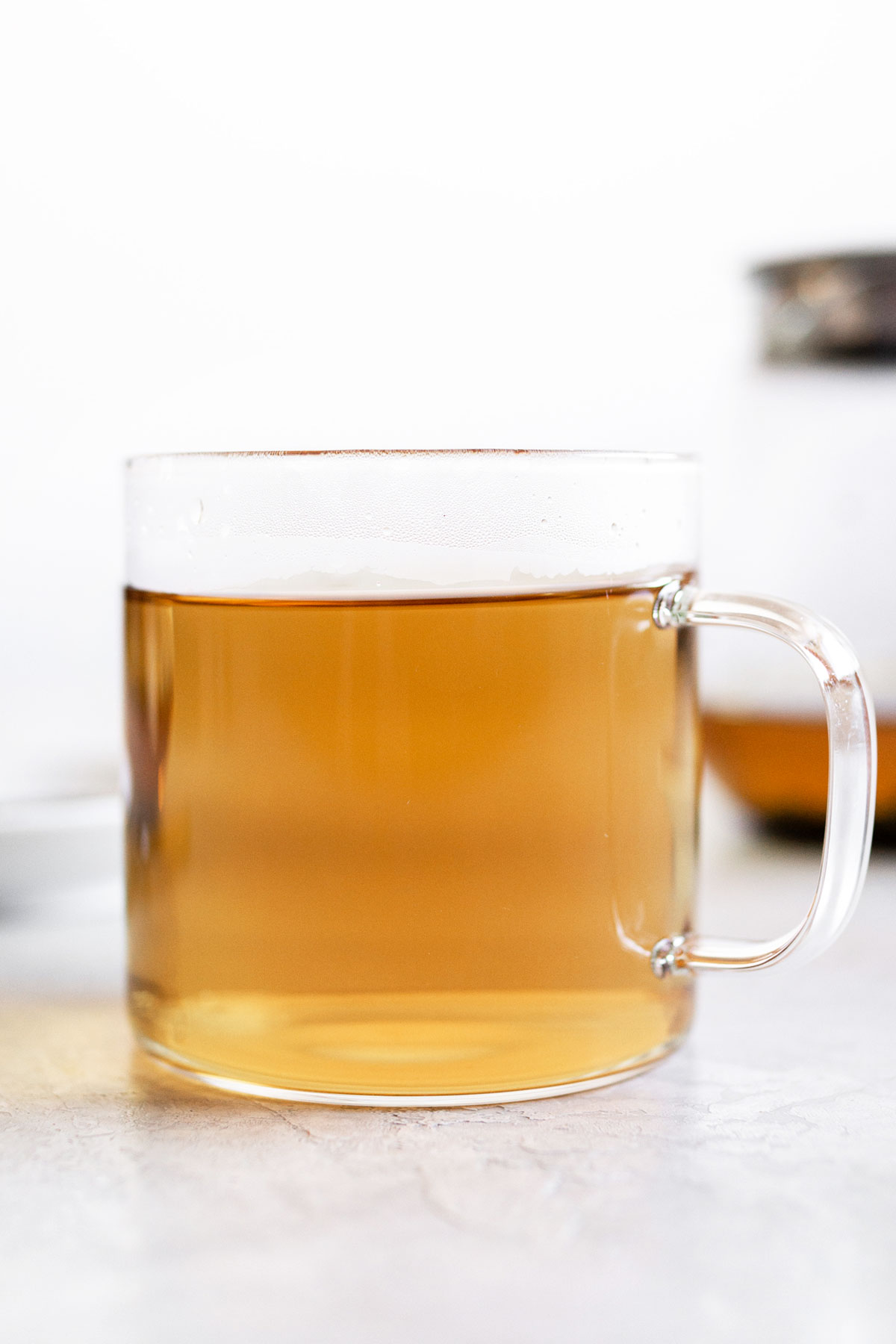
Related
- Chocolate Mint Tea Latte
- Quick & Easy Moroccan Tea
- Mint Lemonade Iced Tea
- Starbucks Medicine Ball Tea Copycat
- 30 Refreshing Iced Tea Recipes
Want to save this recipe to Pinterest for later? Pin it now to your Pinterest board!
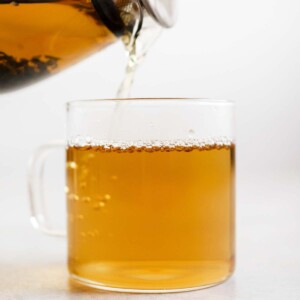
Peppermint Tea
Equipment
Ingredients
- 1 cup water, + more to warm teapot
- 2 teaspoons peppermint tea, or 1 tea sachet or tea bag
Instructions
- Boil water. If using an electric kettle with temperature setting, set it to 208°F. Boil a little more water than needed so that it can be used to warm up the teapot. Filtered water is best.
- Warm up teapot.Pour hot water into a teapot halfway and swirl it around a bit. Discard the water. Warming up the teapot is an extra step that all tea professionals take the time to do, so that when the tea steeps, the water temperature won't drop drastically.
- Put peppermint tea into the teapot and add hot water. Cover teapot and steep for 5 minutes.
- Strain peppermint solids and pour hot tea into a teacup.
Notes
- Both hot and iced peppermint tea can be had without sugar or milk.
- Peppermint tea is pretty forgiving when it comes to steep time. You can steep it longer than 5 minutes and it’ll still taste great and won’t get overly bitter.
- Using loose tea means you can easily adjust the amount of tea used, so you can make it stronger or weaker.
- Peppermint tea can be brewed and stored in the refrigerator for up to 4 days. Keep it covered or airtight glass container or pitcher.
- Loose peppermint tea and tea sachets should be stored in an airtight container away from light, odors, humidity, and heat.
Nutrition
Nutrition information is automatically calculated, so should only be used as an approximation.
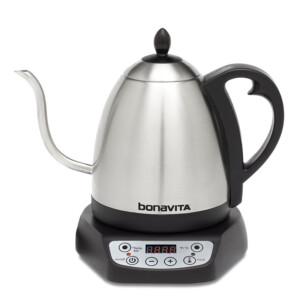
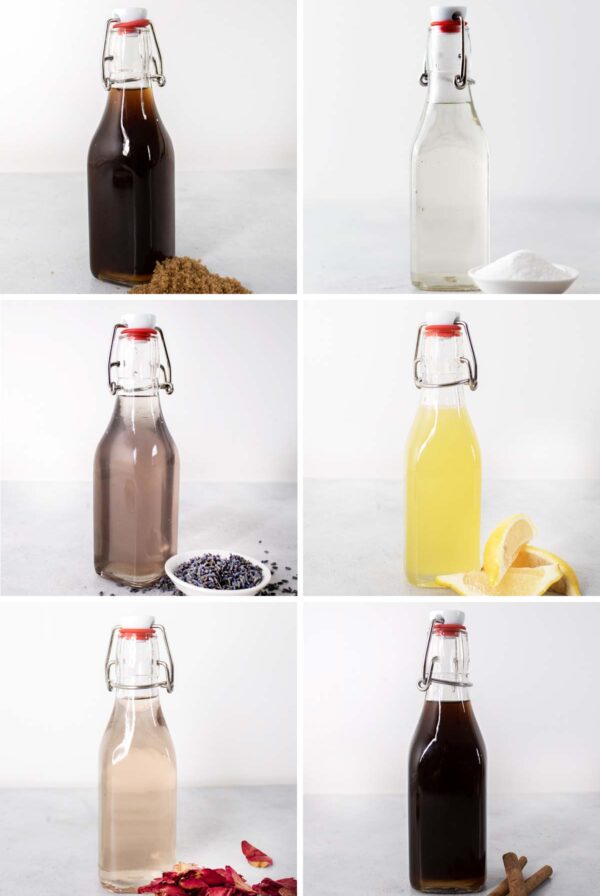
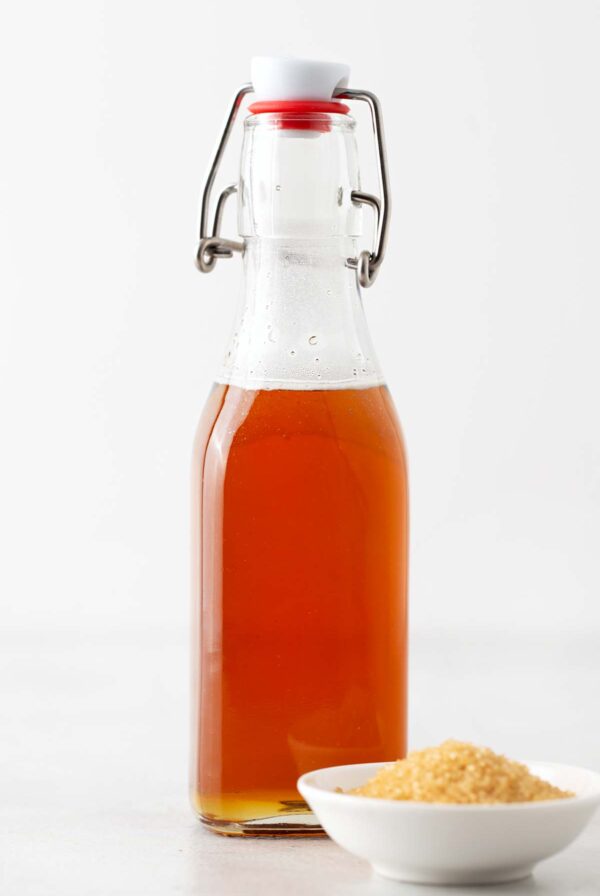
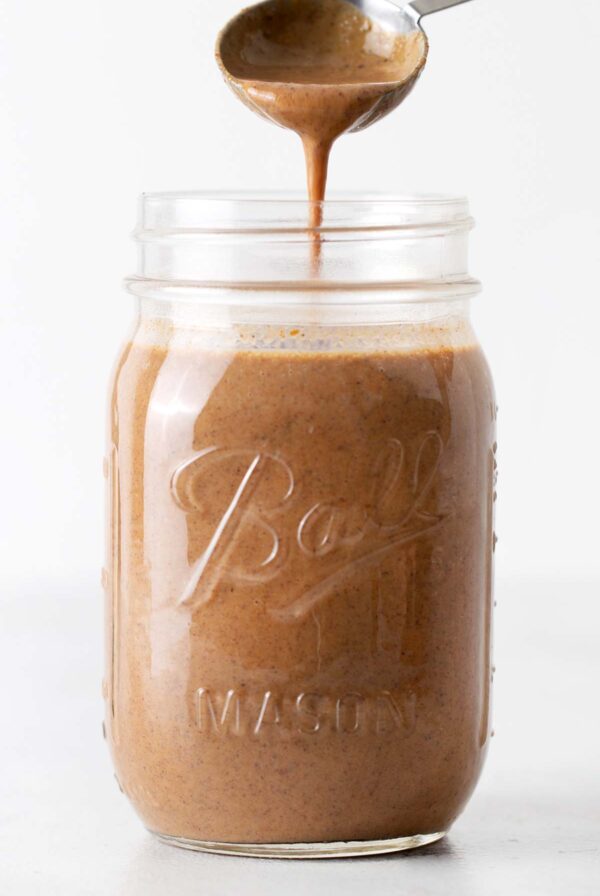
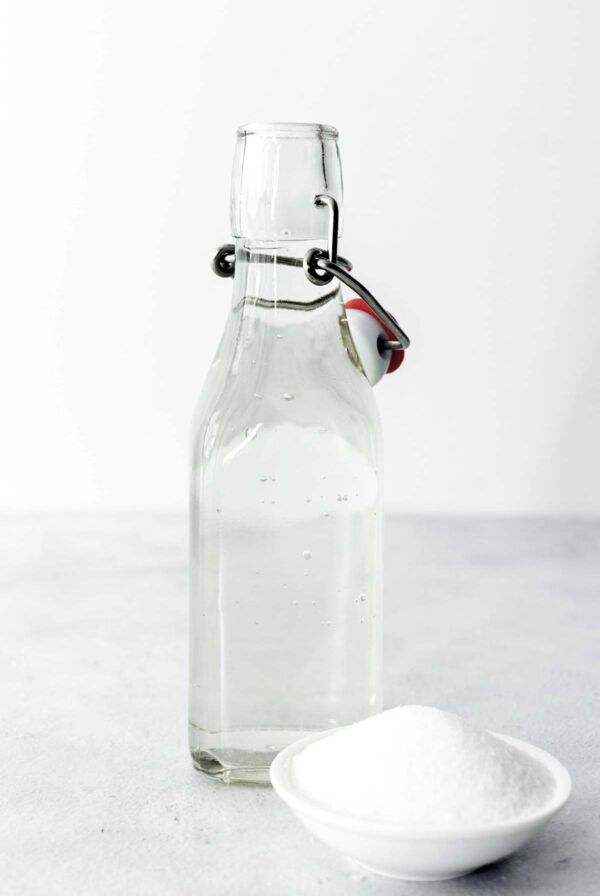








I added honey but yes it was great, helped kids with cough.